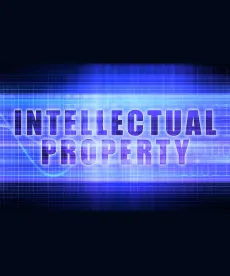On January 13, 2017, the Federal Trade Commission (FTC) and the Antitrust Division of the U.S. Department of Justice (DOJ) issued updated Antitrust Guidelines for the Licensing of Intellectual Property (the Guidelines). The issuance of the revised Guidelines follows nearly half a year of consideration and public commentary. According to the FTC, the updates modernized the Guidelines “without changing the agencies’ enforcement approach with respect to intellectual property licensing or expanding the IP Licensing Guidelines to address other topics.”
The Guidelines Reflect Modest Updates that Reconfirm Key Themes from the 1995 Version of the Guidelines
The relatively modest updates to the Guidelines affirm that the antitrust agencies still believe that intellectual property issues do not require an altered analysis, and that the licensing of intellectual property is generally procompetitive. The majority of the guidelines update relevant authorities to reflect developments in court decisions, statutory law, the agencies’ practice, and the agencies’ guidance over the past 20 years, while leaving intact the main principles and substantive guidance of the 1995 version of the Guidelines.
What is important for those companies operating in the technology and intellectual property licensing arena, is that the updated Guidelines reconfirm the agencies’ commitment to three broad principles:
-
The agencies will apply the same antitrust analysis to conduct involving intellectual property as they apply to conduct involving other forms of property.
-
The agencies do not presume that intellectual property creates market power.
-
The agencies recognize that licensing intellectual property allows firms to combine complementary factors of production and is generally procompetitive.
Commissioner Maureen Ohlhausen praised the revised Guidelines in a statement, issued by the FTC, for “embracing the principles of commendable flexibility” from the 1995 Guidelines with the “modest” update. By standing by these principles, the agencies have continued to provide businesses with consistent guidance over the methods that will be utilized by the agencies to conduct an antitrust analysis of business practices that implicate intellectual property.
A Summary of Relevant Updates
Among other things, the Guidelines confirm and clarify the agencies’ analytical framework for (1) horizontal and vertical transactions involving intellectual property licensing, and (2) “research and development markets,” a newly coined term in the Guidelines. The Guidelines discuss price maintenance agreements, and consistent with the Supreme Court’s decision in Leegin Creative Leather Prod., Inc. v. PSKS, Inc., 551 U.S. 877 (2007), the revised Guidelines now state that “the Agencies will apply a rule of reason analysis to price maintenance in intellectual property licensing agreements” to weigh the procompetitive benefits of the agreement with any anticompetitive effects. This is a significant change from the 1995 Guidelines, which took the position of presuming that such vertical price restraints are, per se, anticompetitive.
The Guidelines also make explicit that the antitrust laws generally do not impose liability for a unilateral refusal to license intellectual property, that a patent cannot be presumed to confer market power, as well as highlight the pro-competitive benefits of intellectual property cross-licensing, reflecting a greater permissiveness regarding common kinds of restraints and restrictions within intellectual property.
A more fulsome discussion of some of the more significant updates can be found here.
Impact of Public Comments
Several outside groups and legal commentators weighed in on the proposed changes to the Guidelines during the period for public comment, which began last August. While several commenters offered praise for the Guidelines and their continued commitment to leaving licensing decisions to intellectual owners, licensees, private negotiations and market forces (unless there is evidence that an arrangement likely harms competition), more specific guidance on controversial topics sought by public commenters is most notably absent from the update
One of these controversial topics is standard-essential patents (SEP) and how the agencies’ might assess practices like “hold-up” conduct by owners of SEPs that are subject to voluntary commitments to licensing on fair, reasonable, and non-discriminatory terms. This is despite at least two-thirds of the public comments mentioning SEPs in some way. At least one commenter praised the agencies for not including a new guideline section on SEPs, explaining that the principles stated in the existing guidelines apply equally to the licensing of SEPs, and that recent pronouncements, by courts and antitrust agencies, provide enough guidance for stakeholders to resolve possible disputes on fair, reasonable, and non-discriminatory licensing in a way that best balances the interests of SEP holders and implementers of standards.
Likewise, several comments addressed the evolving role of patent-assertion entities (or “non-practicing entities”), which are the subject of recent debate and a soon-to-be released FTC study, and are addressed in recent guidelines in jurisdictions outside the United States. Nevertheless, the Guidelines do not seek to address the agencies’ policies concerning patent-assertion entities.
While some commentators applauded the agencies for “correctly rejecting the invitation to adopt a special brand of antitrust analysis” for SEPs and patent-assertion entities, others questioned whether the failure to address these topics would lead market participants to assume that the DOJ and FTC believe positions presented in enforcement actions or other statements and reports are no longer valid.
Notwithstanding these concerns, the FTC and DOJ press release appeared to reassure commenters that “the flexible effects-based enforcement framework set forth in the IP Licensing Guidelines remains applicable to all IP areas” and that “the business community may consult the wide body of DOJ and FTC guidance available to the public.” The agencies further stated that the overarching antitrust framework described in the Guidelines applies to “a variety of conduct involving intellectual property, including standard-setting activities and the assertion of standard-essential patents.”
Like their predecessor, the newly revised Guidelines provide companies operating in the technology and intellectual property licensing space some helpful guidance on how the antitrust agencies will evaluate their intellectual property licensing agreements. The Revised Guidelines also make clear that the agencies continue to view licensing behavior as generally procompetitive. Notwithstanding this fact, those operating in this space should still consider how the Revised Guidelines might affect them – both with changes incorporated by the agencies and those areas in which the agencies declined to include updates.






 />i
/>i

